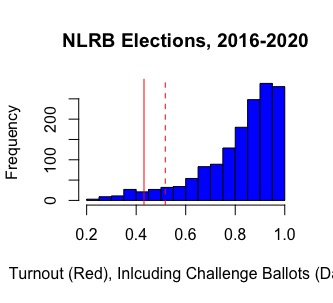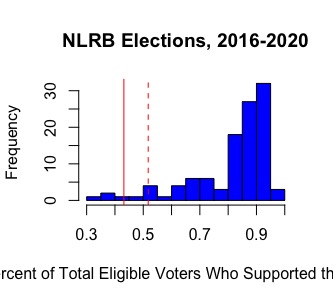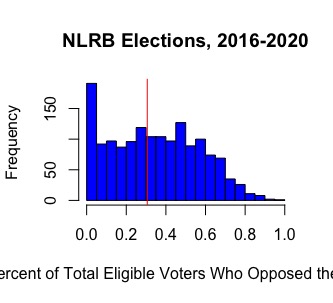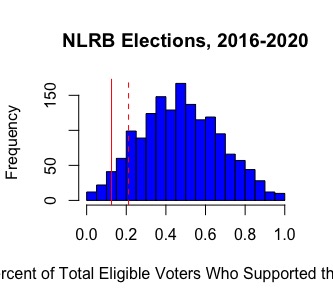To put the Amazon union vote in context, I& #39;ve gathered all the NLRB certification election data from 2016-2020. Using bargaining units of 25 or more workers (n= 1,956), here is what the Amazon union vote looks like:
First, turnout was very low. During this time, the median turnout was 86% while average turnout was 91%.
For the amazon vote, turnout was 43% without challenged ballots (red line) and 51% including all 505 ballots (red dashed line).
For the amazon vote, turnout was 43% without challenged ballots (red line) and 51% including all 505 ballots (red dashed line).
What is surprising to me is that Amazon (the bosses) *underperformed* their expected vote count. In these data, 34% (median) or 35% (mean) of the bargaining unit vote against the union. In Alabama? 30.5% (red line).
Yet the union underperformed their expected vote share of the bargaining unit. In elections, the union wins 47% (median and mean) of the bargaining unit. At Amazon, the union won 12.5% (no challenge ballots, red line) or 21.1% (winning all challenge ballots, red dashes)
A few thoughts: 1. Despite all of the pressure and money that Amazon poured into this campaign, the company was unable to even turn out the expected number of no votes.
2. These data support Jane McAlevey& #39;s ( @rsgexp) excellent article about how organizing at Amazon is possible but requires a sound organizing strategy strategy that builds worker power and solidarity. https://www.thenation.com/article/activism/bessemer-alabama-amazon-union/">https://www.thenation.com/article/a...
3. Amazon& #39;s money and influence seems to have driven down participation on the union side. A big part of this is most likely fear and making it seem like winning is impossible. The Pro Act would help address both these concerns.

 Read on Twitter
Read on Twitter





